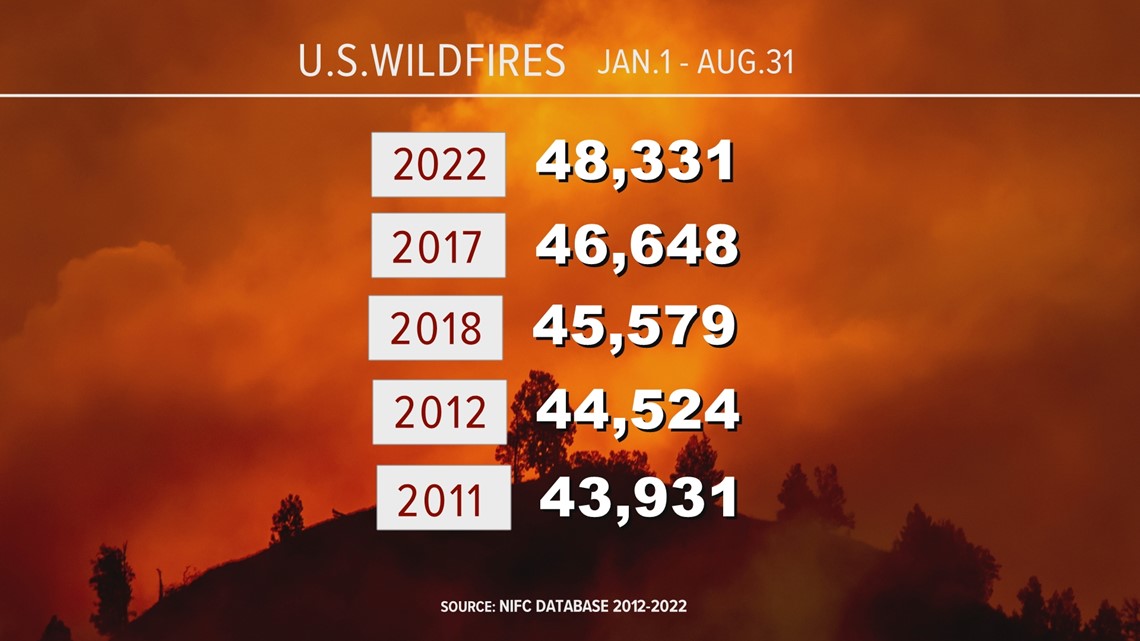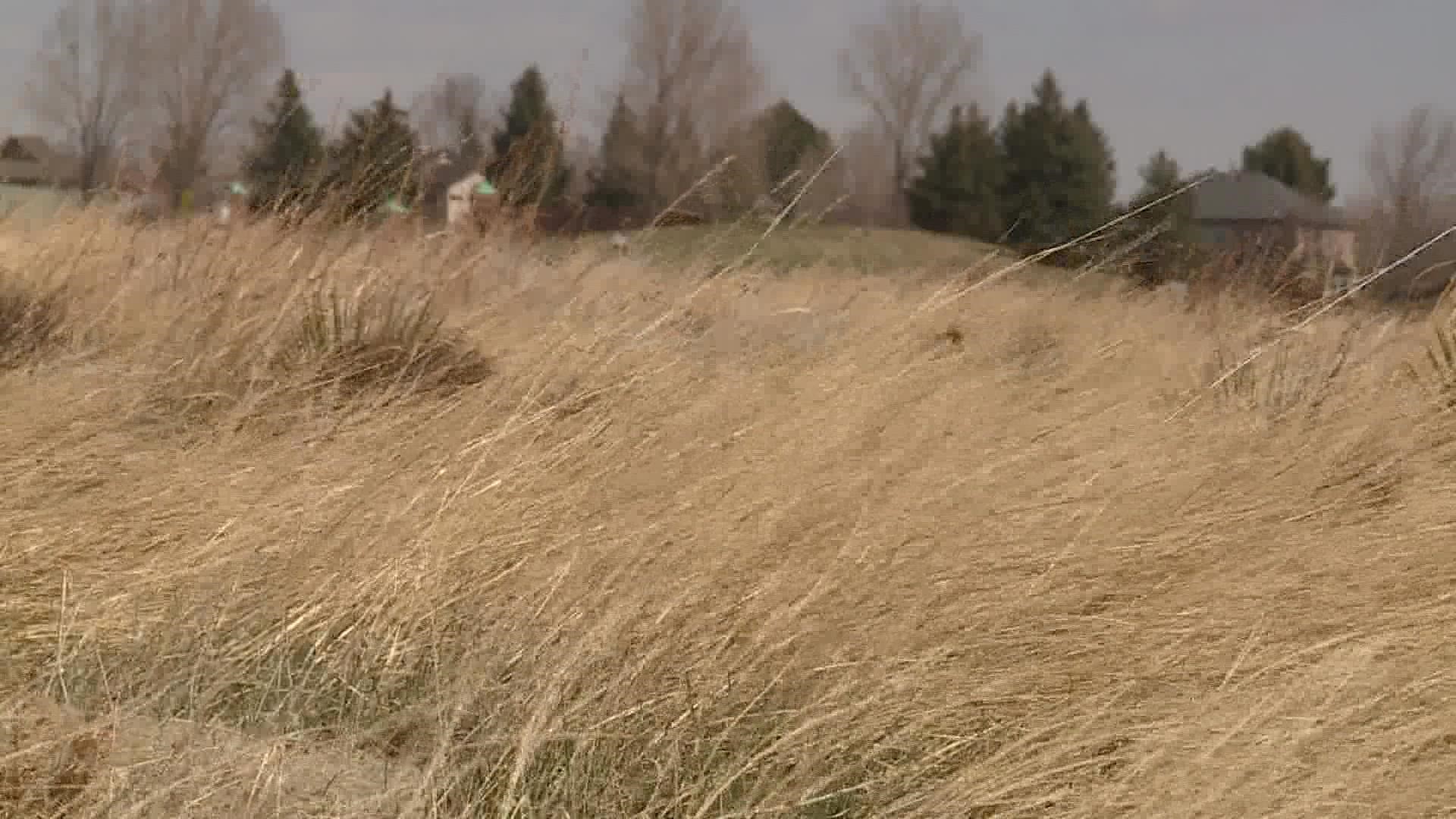LAKEWOOD, Colo. — The Route Fire growing near Los Angeles is one of more than 48,000 wildfires that have started across the country this year. That makes 2022 the most active wildfire season in more than 10 years.
More than six million acres (6,153,171 acres) of land has burned in the U.S. since Jan. 1. That’s the most area covered by wildfire since 2018 (6,939,284 acres).
Some Colorado residents might not be aware of that because our wildfire season has been well below average so far. Even a lot of the out-of-state wildfire smoke has managed to swerve around us.
It's a bit surprising considering the grim preseason outlook that was issued on May 1, calling for an active year.


Wildland fire meteorologists say we were saved by the somewhat unexpected behavior of the summer monsoon.
“And that’s fairly predictable, but there’s always that uncertainty as to how far north it will come and will we get the lighting and not the rainfall," said Coleen Haskell, a meteorologist with the Rocky Mountain Coordination Center (RMCC). "This year we really lucked out and we got both.”
She said the hyperactive monsoon was just widespread and consistent enough to shield the Colorado mountains with moisture. That saved the state from an active summer.
The monsoon didn't reach far enough north and west to help Montana, Idaho, Oregon and California, though. And Alaska actually accounted for nearly half the acres burned so far after a very active July.
There have been six fires in Alaska this year bigger than the Cameron Peak Fire in Colorado two years ago. The largest has been the Lime Complex, which burned an astonishing 865,625 acres.
Before the monsoon became active in June, Haskell said, wildfires attacked the southern states. New Mexico had two fires larger than 200,000 acres by the end of May. Arizona also had several active fires at that time.
Then Texas and Oklahoma had a rash of unusually large wildfire activity. The southern area has accounted for 26,198 fires and about 1.3 million acres burned.
After a very dry April in Colorado, it looked like our state was also headed down a very active wildfire path, even early in the season. But Haskell said late snow in May held that wildfire threat back until the monsoon kicked in in June.
She said there have only been 23 large wildfires in Colorado this year, with about 44,000 acres burned. The Cameron Peak and East Troublesome fires in 2020 burned a total of 402,725 acres, which is almost 10 times the amount burned in the whole year so far.
Note: A large fire is defined as 100 acres or more in timber or 300 acres or more in grass.
How long will the rainy benefits last?
Haskell warns that the wet benefits of the monsoon can be quick to fade.
Grasses have grown in thicker and more abundant than usual, meaning there is more fuel for fire, and in a drier and windier fall weather pattern, that fuel will start to dry.
“In other words, you can put as much rain on that grass or brush, but it's already finished its growing season and it’s what we consider to be cured," she said. "So any kind of ignition with wind following it, like a thunderstorm or a cold front, could push fire.”
Haskell said that elevates the threat of urban wildfires, prairie fires, and even forest fires because they normally start on the ground in grass and work their way up to the tree canopies.
That new wildfire threat could linger for several months, likely until a consistent winter weather pattern emerges.
The RMCC just released its new seasonal wildfire outlook on Thursday afternoon, addressing some of the fall concerns. Overall they are calling for average wildfire activity over the next three months.
SUGGESTED VIDEOS: Wildfires in Colorado

